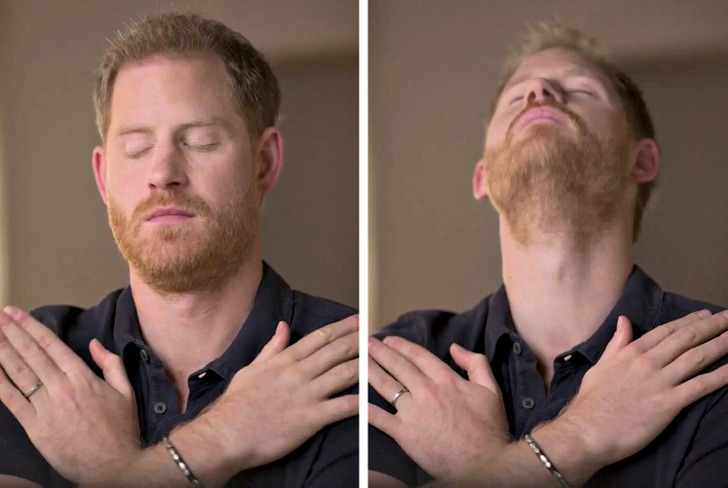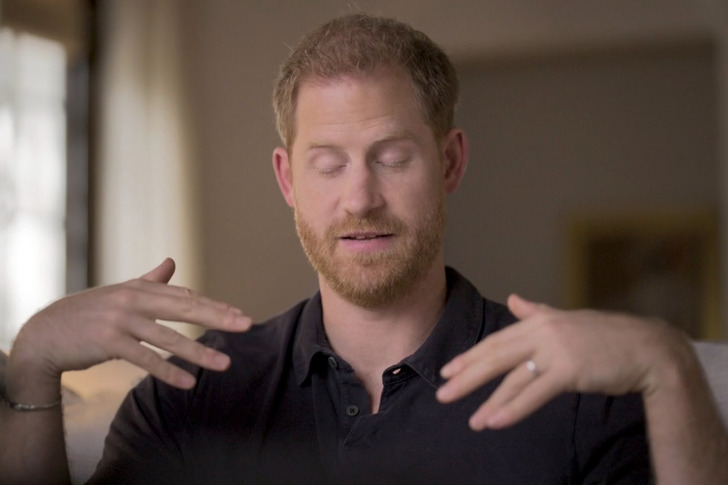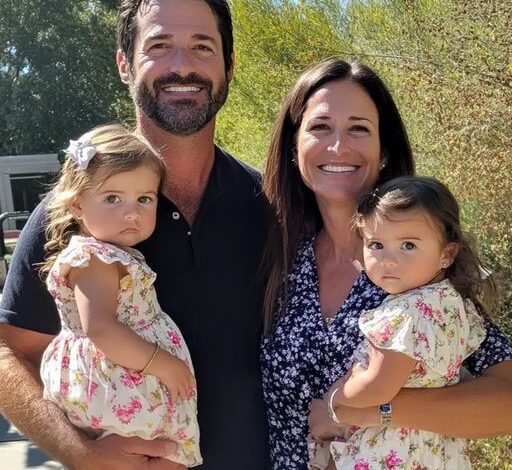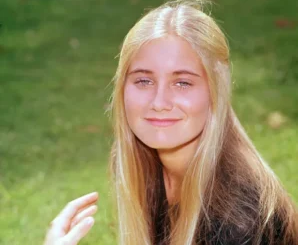Prince Harry recently opened up about his journey with post-traumatic stress disorder following the loss of his mother, Princess Diana. In a candid discussion, he revealed his exploration of a groundbreaking therapy that helped him.

The therapy is called eye movement desensitization and reprocessing (EMDR) to address the debilitating effects of his anxiety attacks. This revelation offers a glimpse into the royal’s personal struggles and his proactive approach towards mental health care, shedding light on the significance of seeking innovative treatments of traumas.
In a video, Prince Harry can be seen undergoing EMDR therapy, where he taps his shoulders and moves his eyes rapidly. This therapy is relatively new and is used to treat PTSD. Prince Harry shared that he decided to try EMDR to deal with severe anxiety attacks he was experiencing.
Prince Harry mentioned that he was open to trying EMDR because of the therapy and work he had done over the years.

During a therapy session with UK-based psychotherapist Sanja Oakley, Prince Harry demonstrated how EMDR helped him feel better about returning home. He described feeling scared and helpless before, but the therapy helped him cope with those feelings.
Prince Harry’s openness about his experience with EMDR therapy sheds light on alternative treatments for post-traumatic disorder and mental health struggles. It shows that seeking help and trying different therapies can make a difference in managing mental health conditions.

EMDR is a therapy made in 1987 to help with emotional traumas. It’s a structured therapy where you think about a tough memory while moving your eyes back and forth. This helps lessen the strong feelings tied to the memory.
EMDR works on a theory called Adaptive Information Processing (AIP). It says that trauma sticks around because it hasn’t been dealt with properly. So, when something reminds you of the trauma, those memories can come back strongly.
Unlike other therapies that try to lessen your reaction to trauma, EMDR tries to change how your brain stores those tough memories. Sometimes, instead of eye movements, you might listen to alternating tones. Usually, EMDR happens once or twice a week for about six to 12 sessions. But it can vary depending on the person.
Benefits of EMDR therapy
- EMDR is a structured therapy and usually needs fewer sessions than ongoing therapies.
- You don’t have to keep going back to the tough memory for a long time.
- You don’t have to talk a lot about what happened to you.
- There’s no homework to do.
- EMDR doesn’t try to change your thoughts and beliefs.
Disadvantages of EMDR therapy
- While EMDR is known to help with PTSD, it hasn’t been studied as much for other mood or mental health problems.
- If you’re avoiding talking about a tough event, EMDR might not be the best choice. Other types of talk therapy might work better.
- EMDR can sometimes make you feel worse at the start of treatment. The person who created EMDR warns that this could be dangerous for people who have gone through really tough things.
The process of EMDR
EMDR is a structured process with eight phases, each aimed at helping you deal with traumatic memories:
- History taking: Discuss your past with the therapist to identify which memories to focus on.
- Preparation: Learn about EMDR and how the therapist will use bilateral stimulation.
- Assessment: Identify your negative and positive beliefs related to the trauma.
- Desensitization: Use bilateral stimulation while recalling the memory.
- Installation: Focus on positive beliefs while processing the memory.
- Body scan: Talk about how you feel emotionally and physically.
- Closure: Prepare for what may happen between sessions.
- Reevaluation: Assess your progress and decide if more sessions are needed.
As you go through EMDR, you may start feeling less overwhelmed by the trauma. It’s normal for other painful memories to surface, indicating that suppressed memories are being processed.
When grappling with deep emotional traumas, it’s crucial to seek out specialists who can provide the appropriate form of treatment tailored to your needs. Whether it’s EMDR therapy or other therapeutic approaches, finding the right professional can make a significant difference in your healing journey.
Preview photo credit Good Morning America / YouTube
I Met a Fortuneteller After My Wifes Funeral, The Next Day, Her Prediction Came True

The funeral was unbearable. Our daughters, Sophie and Emma, only four and five years old, kept asking, “Where’s Mommy?” I had no idea how to answer. How could I explain something I didn’t understand myself? Thankfully, Elizabeth’s parents and sister were there to help handle the arrangements.
After the service, as I walked to my car in a daze, I felt someone watching me. At first, I thought it was just my grief playing tricks on me, but then I saw her—an old woman standing near the cemetery gates.
She looked ancient, her face etched with deep lines, her sharp eyes piercing through me as if she could see straight into my soul.
“Excuse me,” she called softly.
I hesitated but didn’t respond. I was too drained for conversation, especially with a stranger.
“I know your fate,” she said, her voice serious.
I frowned. “What?”
“Cross my palm with silver, and I’ll reveal the joy and sorrow that lie ahead,” she continued, holding out her hand.
I stared at her, bewildered. A fortune-teller? At a funeral? I shook my head, muttering, “I’m not interested,” and started to walk away.
But her next words stopped me cold. “Elizabeth won’t rest until justice is served.”
I turned back sharply. “What did you say?”
“Twenty dollars,” she said, beckoning with her bony fingers. “That’s all.”
Under normal circumstances, I would’ve dismissed her. But in my grief-stricken state, I was numb to everything. Twenty dollars seemed insignificant in the grand scheme of things. I handed her the crumpled bill.
Her hand felt icy as she grabbed mine, her grip surprisingly firm. She didn’t take her eyes off me, and for a moment, I felt exposed, as though she could see all the pain I was carrying.
“Today, you’ve lost someone dear,” she whispered.
“Yeah, no kidding,” I said bitterly. “We’re at a cemetery.”
She didn’t flinch. “Your wife’s death was no accident.”
A chill ran down my spine. “What are you talking about?”
“There’s more to her death than you know. Tomorrow, the truth will begin to reveal itself.”
I felt my mouth go dry. “What truth?”
She smiled slowly, an unsettling grin. “By this time tomorrow, you’ll see.”
Before I could ask anything else, she turned and disappeared into the mist, vanishing as if she had never been there. I stood frozen, torn between disbelief and a strange sense of foreboding.
That night, I couldn’t sleep. Every time I closed my eyes, I saw Elizabeth—her smile, her laugh, the way she kissed our daughters goodnight. But the fortuneteller’s cryptic words haunted me: “Your wife’s death was no accident.” Was there any truth to it? Could the crash have been something more sinister?
Unable to rest, I got up and sifted through Elizabeth’s things, desperate to feel close to her. Among her belongings, I found something odd—receipts from a car rental service. We had two cars. Why would she need a rental?
I stared at the receipts, my heart racing. The fortuneteller’s words echoed in my mind. “There’s more to her death than you know.”
The next morning, I couldn’t shake the feeling that something was terribly wrong. I called Elizabeth’s best friend, Sarah, who worked at the garage where our cars were serviced. Maybe she could help me make sense of it all.
“Hey, Sarah,” I said, trying to keep my voice steady. “Did Elizabeth mention anything to you about renting a car?”
There was a brief pause before she answered. “Actually, yes. She rented a car when both of your cars were in the shop. It was for a surprise trip to the beach, but she returned it the day before… well, you know.”
“But why didn’t she tell me?” I muttered to myself.
“She wanted it to be a surprise,” Sarah replied. “She even asked her sister Karen to return the car for her after the trip.”
A wave of unease washed over me. Karen? Why would she return the car, and why hadn’t I known about it?
Determined to get answers, I drove to the rental company. When I explained the situation, the manager pulled up the records. “The car was returned without visible damage. We accepted it as normal, but… something seems off. Only a few miles were added to the odometer.”
I left the office with more questions than answers. Why had Karen returned the car? What was she hiding? I decided to contact the police, as the suspicion that Elizabeth’s death wasn’t an accident gnawed at me.
I explained everything to the detective—the car rental, the fortuneteller, my growing doubts. He listened carefully and assured me they’d investigate. “Initially, we ruled it a tragic accident caused by brake failure,” he said. “But now, with what you’ve shared, we’ll take a closer look.”
The days that followed were a blur. Then, the police found something shocking—evidence that someone had tampered with the brakes. My stomach churned as the horrifying truth began to surface.
It wasn’t long before the investigation revealed even more. Karen had taken out a life insurance policy on Elizabeth just months before the accident. She had forged Elizabeth’s signature and made herself the sole beneficiary.
I was sickened. Elizabeth’s death hadn’t been an accident—it was murder. And the person behind it was her own sister.
When Karen was arrested, I couldn’t even look at her. The woman who had comforted me in my grief had been the one to cause it all, driven by greed.
During interrogation, she confessed to tampering with the car’s brakes, hoping to collect the insurance money. The betrayal was devastating.
Karen was sentenced to life in prison. It didn’t bring Elizabeth back, but at least I knew she would never harm anyone again. The fortuneteller had been right—Elizabeth couldn’t rest until justice was served.
A few weeks later, I returned to the cemetery. As I stood by Elizabeth’s grave, I whispered, “You can rest now.”
Just as I was about to leave, a butterfly landed on her headstone. I knew it was Elizabeth, finally at peace.
Though I never saw the fortuneteller again, her words had led me to the truth. As painful as it was, that truth was worth every penny of the twenty dollars I had given her.



Leave a Reply